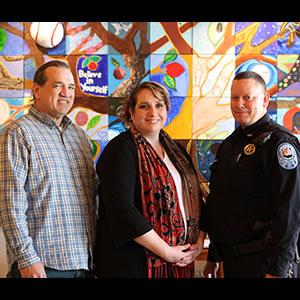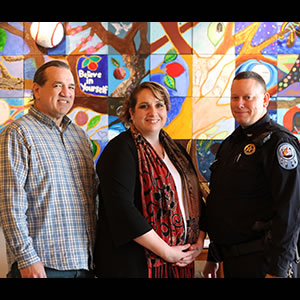Archival Notice
This is an archive page that is no longer being updated. It may contain outdated information and links may no longer function as originally intended.
Prairie Band Potawatomi Nation - Tribal Victim Services | Award for Professional Innovation in Victim Services
Team Members: Michael Boswell; Rebekah Jones; Kent Miller
Mayetta, Kansas
Rebekah Jones and Kent Miller of the Prairie Band Potawatomi Nation’s Tribal Victim Services (TVS) Program created an outstanding victim services program within the Tribal Police Department under the administration of Chief of Police Michael Boswell. The TVS Program assists American Indian victims of crime in Northeast Kansas in navigating the criminal justice system and locating and accessing resources, and offers support in recovering from the traumatic physical, financial, emotional, and spiritual effects that result from crime. In addition, Ms. Jones and Mr. Miller worked together to create culturally relevant services for crime victims in Indian Country.
Accomplished artists, Ms. Jones and Mr. Miller developed a cultural healing in the arts program to assist crime victims in their tribal communities. Different from most group counseling sessions where victims look at each other as they share some of their most violent and horrific experiences in victimization, healing in the arts creates an environment where victims have a diversion that allows them to more comfortably share their experiences, thoughts, and fears as they relate to their victimization.
Ms. Jones and Mr. Miller also created an opportunity for crime victims to express their experiences through art. They created an artistic tree for healing called the Community Story Tree Project, which consists of 72 canvas panels, each measuring 12 inches by 12 inches. Some panels convey messages of pain and suffering, while others convey hope, love, and understanding. The completion of the Community Story Tree Project has visualized the community’s dedication and desire to help victims of crime heal. The result is a creation that represents the community’s hopes and dreams for tribal families, survivors, children, service providers, professional elders, and tribal leaders.



